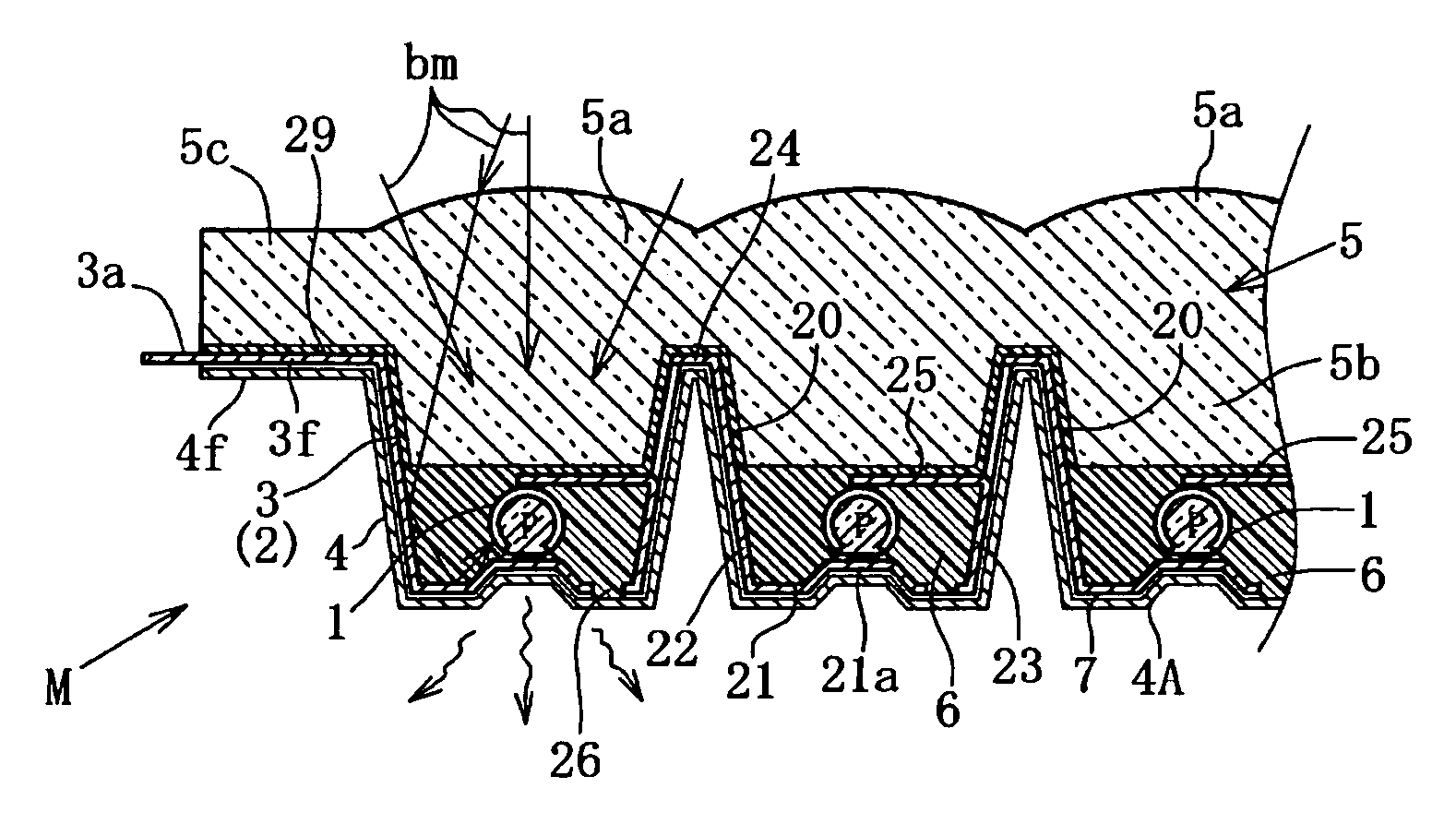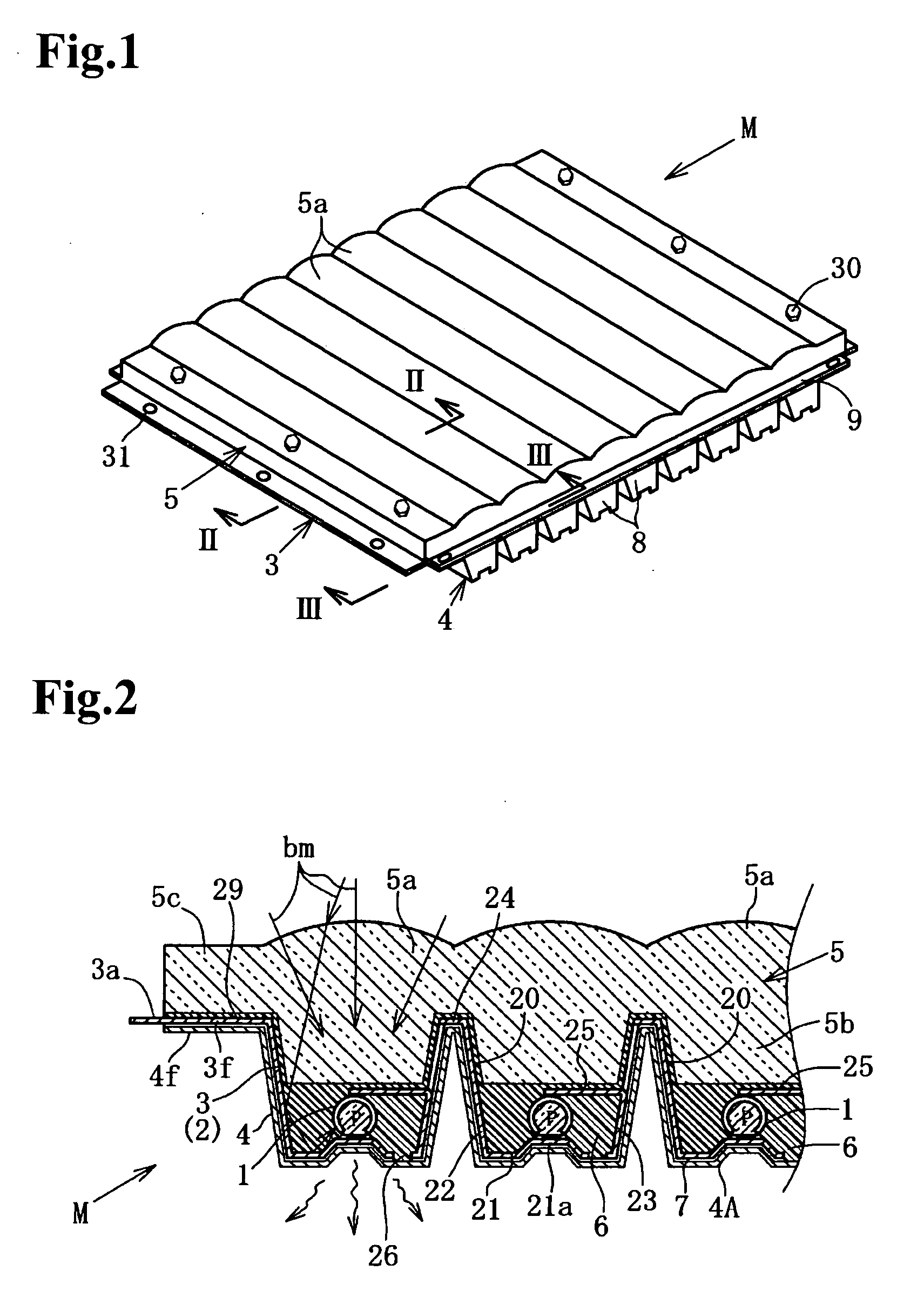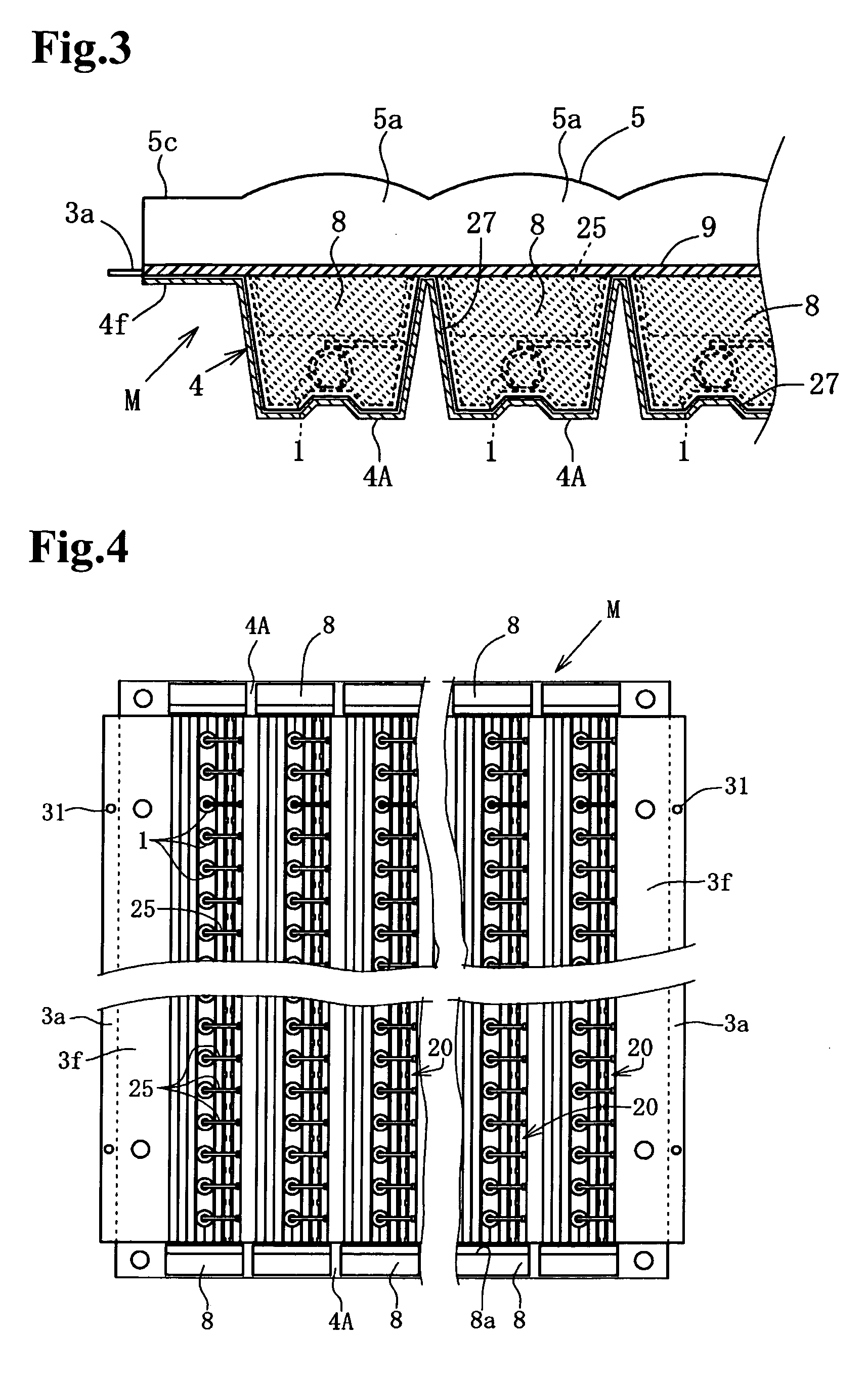Panel-shaped semiconductor module
a semiconductor module and panel-shaped technology, applied in the direction of solid-state devices, pv power plants, basic electric elements, etc., can solve the problems of uneven electric current distribution within solar battery cells, difficult to improve electric power generation efficiency, and difficulty in sufficiently increasing incident light usage rate, etc., to achieve simple structure, increase the efficiency of electric power generation or light emission output, and reduce the number of parts
- Summary
- Abstract
- Description
- Claims
- Application Information
AI Technical Summary
Benefits of technology
Problems solved by technology
Method used
Image
Examples
embodiment 1
[0093]The panel-shaped semiconductor module relating to Embodiment 1 is a solar battery module (solar battery panel) receiving the sunlight and generating electric power. This solar battery module M will be described with reference to the drawings. As illustrated in FIGS. 1 to 5, the solar battery module M comprises multiple granular semiconductor elements 1 having light receiving capability, a conductive connection mechanism 2 electrically connecting the semiconductor elements 1 (see FIG. 9), an inner metal case 3 housing the multiple semiconductor elements 1, an outer metal case 4 fitted on the underside of the inner metal case 3, a transparent cover member 5 covering the top of the inner metal case 3, a silicone rubber insulating synthetic resin material 6 introduced in the inner metal case 3, a synthetic resin layer 7 bonding the inner and outer metal cases 3 and 4 together, multiple side plug blocks 8, and two reinforcement plates 9.
[0094]As illustrated in FIG. 8, the semicondu...
embodiment 2
[0132]A solar battery module Ma (panel-shaped semiconductor module) illustrated in FIG. 11 has a duct member 35 fitted on the underside of the above described solar battery M. The solar battery module Ma has the same structure as the solar battery module M except for the duct member 35. Therefore, the same components are designated by the same reference numerals and their explanation will be omitted. The duct member 35 has an inverted trapezoidal body 35a forming a coolant passage 36 together with the outer metal case 4 for a forced or natural flow of a coolant fluid such as air and cooling water, and flanges 35f extending from right and left ends of the body 35a. The flanges 35f are each fastened to the flat plate 5c of the cover member 5, flange 3f of the inner metal case 3, and flange 4f of the outer metal case 4 by multiple bolts 30 from below.
[0133]With a coolant such as air and cooling water running through the coolant passage 36, the inner and outer metal cases 3 and 4 and se...
embodiment 3
[0134]This embodiment relates to light emitting semiconductor elements (light emitting diodes) applied to a high output power light emitting diode module with a reflecting mechanism, which is a panel-shaped semiconductor module. This light emitting diode module with a reflecting mechanism comprises light emitting semiconductor elements in place of the semiconductor elements 1 of the above described solar battery module M.
[0135]The light emitting semiconductor element will be described hereafter.
[0136]As illustrated in FIG. 12, a light emitting semiconductor element 40 has a nearly spherical (a partial sphere close to a sphere) base 41 consisting of an n-type semiconductor crystal, a p-type diffusion layer 42 formed in the surface part of the base 41 (which corresponds to another conductive layer having a conductivity type different from the base), a nearly spherical pn junction 43 formed by the base 41 and diffusion layer 42, positive and negative electrodes 44 and 45, and an antire...
PUM
 Login to View More
Login to View More Abstract
Description
Claims
Application Information
 Login to View More
Login to View More - R&D
- Intellectual Property
- Life Sciences
- Materials
- Tech Scout
- Unparalleled Data Quality
- Higher Quality Content
- 60% Fewer Hallucinations
Browse by: Latest US Patents, China's latest patents, Technical Efficacy Thesaurus, Application Domain, Technology Topic, Popular Technical Reports.
© 2025 PatSnap. All rights reserved.Legal|Privacy policy|Modern Slavery Act Transparency Statement|Sitemap|About US| Contact US: help@patsnap.com



